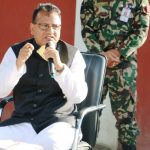Feb 7, 2015.
By: Kushal Pokharel
Background
Prosperity of a nation rests on the stock of human capital which in turn depends the quality of educational system. Realizing this fact, both the developed and the developing countries have regarded education as a major instrumentof development policy.
Knowledge has become a key element for growth and development in today’s global economic environment. It is also very important for surviving in the competitive environment that has started to prevail for the past few decades since globalization came into practice. With the emergence of global markets, companies are focusing on employing more professionals with a thorough knowledge of the specialized field. Against this backdrop, the role of higher education is vital as it provides the maximum exposure to the practical aspect of the knowledge already possessed. Increased knowledge streams have increased the employment opportunities available for students.Expansion and diversification of higher education system is an ongoing process across the world.
Globally speaking, the curriculum of the higher education system encourages students to explore opportunities and become analytical and self-exploratory in life. Courses are updated on a regular basis as per the needs of global markets and country’s economic needs. They are interdisciplinary, project-based, and research-driven. With higher orderthinking skills, multiple intelligence and authentic assessments embedded in the education, students are self-directed and work both independently and interdependently.The curriculum and instructions are designed to motivate students to differentiate their individual tasks and at the same time inculcating them the sense of challenging attitudes in study.
Nepalese Context
On the contrary, Nepal’s higher education is plunging to a crisis. The era of higher education in Nepal began in 1918 AD with the establishment of Tri-Chandra College. Tribhuvan University (TU) was established only in 1959 (2016 BS) that happens to be the first state-run university in Nepal. Today,it handles 61 constituent and 191 affiliated campuses across the country independently with its own mechanism. As the biggest university of the state, TU offers 1,079 courses at the bachelor’s level and over 1,000 courses at the master’s level at present (TU, 2010). In 1971 the government made radical changes in the education system of the country by introducing National Education System Plan (NESP) under the forth five-year development plan (1970-75).
Establishment of Mahendra Sanskrit University in Dang in 1986 paved a new dimension to foster Sanskrit education in Nepal. Gradually the concept of multi-university system emerged in the country to decentralize and develop education in the regional level. As a result, Kathmandu University came into existence in 1991 while Purbanchal University and Pokhara University emerged in 1995 and 1997 respectively to cover the eastern and western regions of Nepal as regional universities.Following the footsteps, Lumbini Boudha University incorporated in 2005. A couple of deemed universities are also in operation. They are National Academy Medical Sciences (2002) and B.P. Koirala Institute of Health and Sciences (1993). Besides, four other universities – the Agriculture and Forest University at Rampur Chitwan, Open University, Mid-Western University, Far-Western University are also in the pipeline.
Now, there are six universities and two medical institutes granting their own degrees in Nepal. However, expansion is not sufficient. One must ask whether the structure and pattern of higher education development has served the community.

The critical issues facing higher education are the defects in the curriculum and delivery resulting in reduced employability:
i. Curriculum: The curriculum of majority of universities in Nepal emphasize rote learning. As a matter of fact, the higher education is not directed towards improving the critical thinking of students. Innovative and creative thinking, culture of exploration and research are not conceptualized while designing the syllabus of higher education. The courses and curricula are not designed according to the standard of higher education of the present day. The curricula are not written in detail and left to the professors personal likes, dislikes, interests or experiences. The curriculum focuses merely on imparting knowledge rather than developing all aspects of a student’s personality. The syllabus doesn’t focus on broadening the outlook,fostering the feeling of oneness, nationalism and sacrifice among students.
ii. Delivery: The problem of lecture delivery has invited serious consequences on the part o the students psychology of learning. The conventional lecture delivery system tends to increase boredom and frustration among students. Furthermore, the lack of skilled professors and lecturers due to less training and professional development opportunities provided by the universities The right of academic freedom is an utterly neglected issue in higher education. Closely allied with this problem is the governance system of higher education. Universities rarely enjoy academic freedoms in terms of making professional appointments, tenure research, salary scales among others.
Moreover, many present faculty members are teaching courses which are not their own specialization. Most of the teachers are appointed by political influence. The majority of faculty members are master degree holders with little or no practical knowledge and higher education experiences.
iii. Employment: There is a mismatch between the market needs and the university graduates, and this has been a longstanding imbalance. The present curriculum does not prepare students for lifelong careers, nor does it provide them with an understanding and appreciation of the challenges and problems faced by the developing nation. The syllabus of university program along with the assessment pattern in Nepal are major causes to produce incompatible manpower fit only for unemployment pool. Besides,weak interface between job market and academia, decade-old curriculum and outdated textbooks are other main stumbling blocks in imparting quality in Nepalese academic institutions.
Conclusion
In a nutshell, higher education needs to have a sound grounding in values to help create citizens with a sense of social justice. Secondly, any education policy must be underlined by the aim to develop knowledgeable citizens who can contribute to the smooth functioning of the nation and the development of the society. There needs to be a concrete vision not an abstract utopian one: Do we want to strengthen Nepal´s agricultural development? Should we foray into technological advancement? This vision will in turn provide answers to what kind of knowledge, skills and abilities need to be developed. Thirdly, higher education should be directed toward improving the critical thinking of students.






